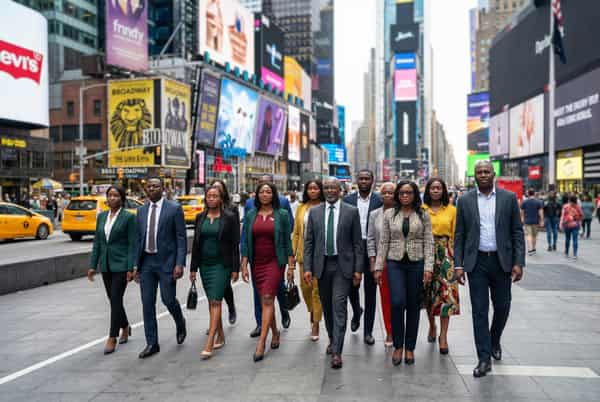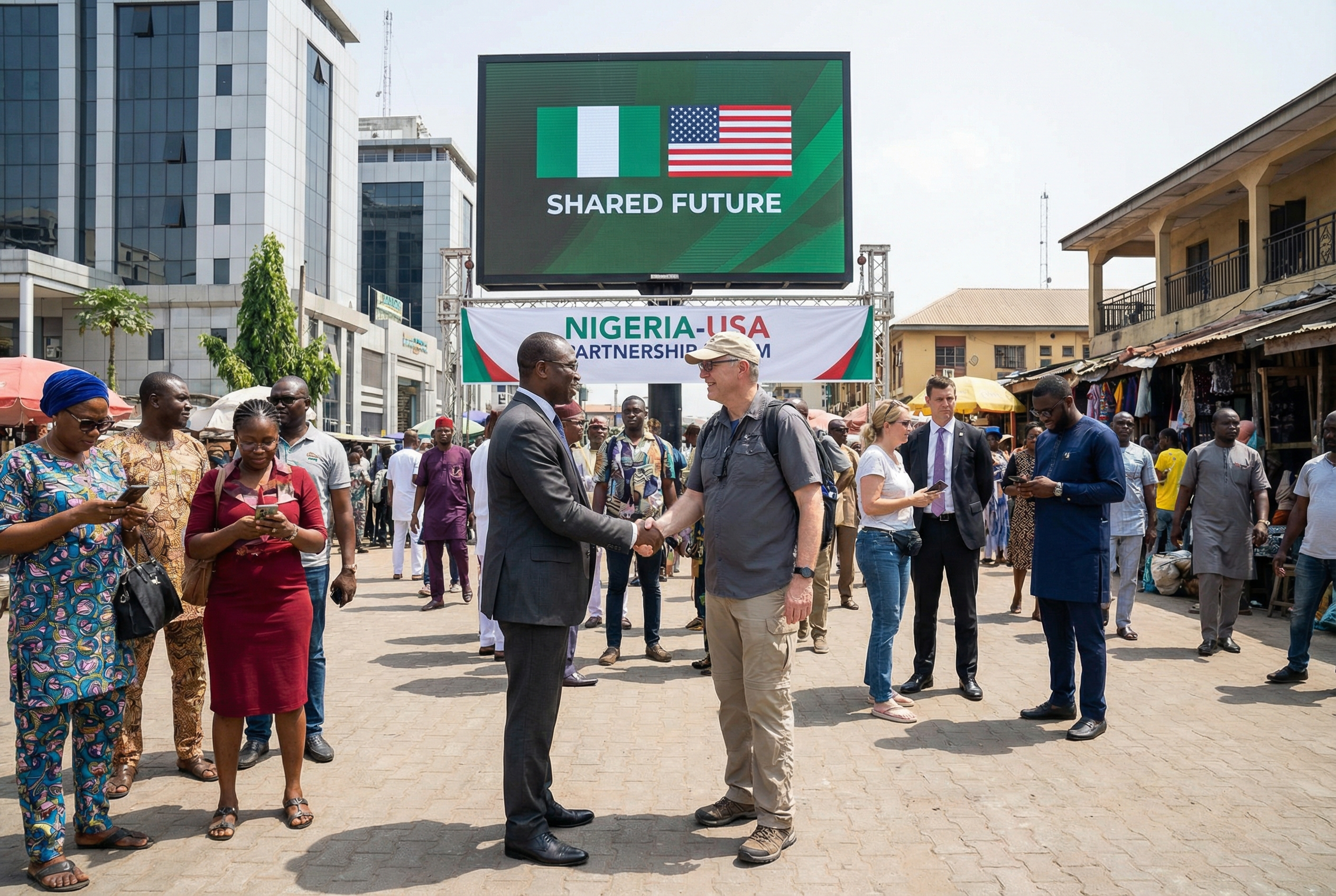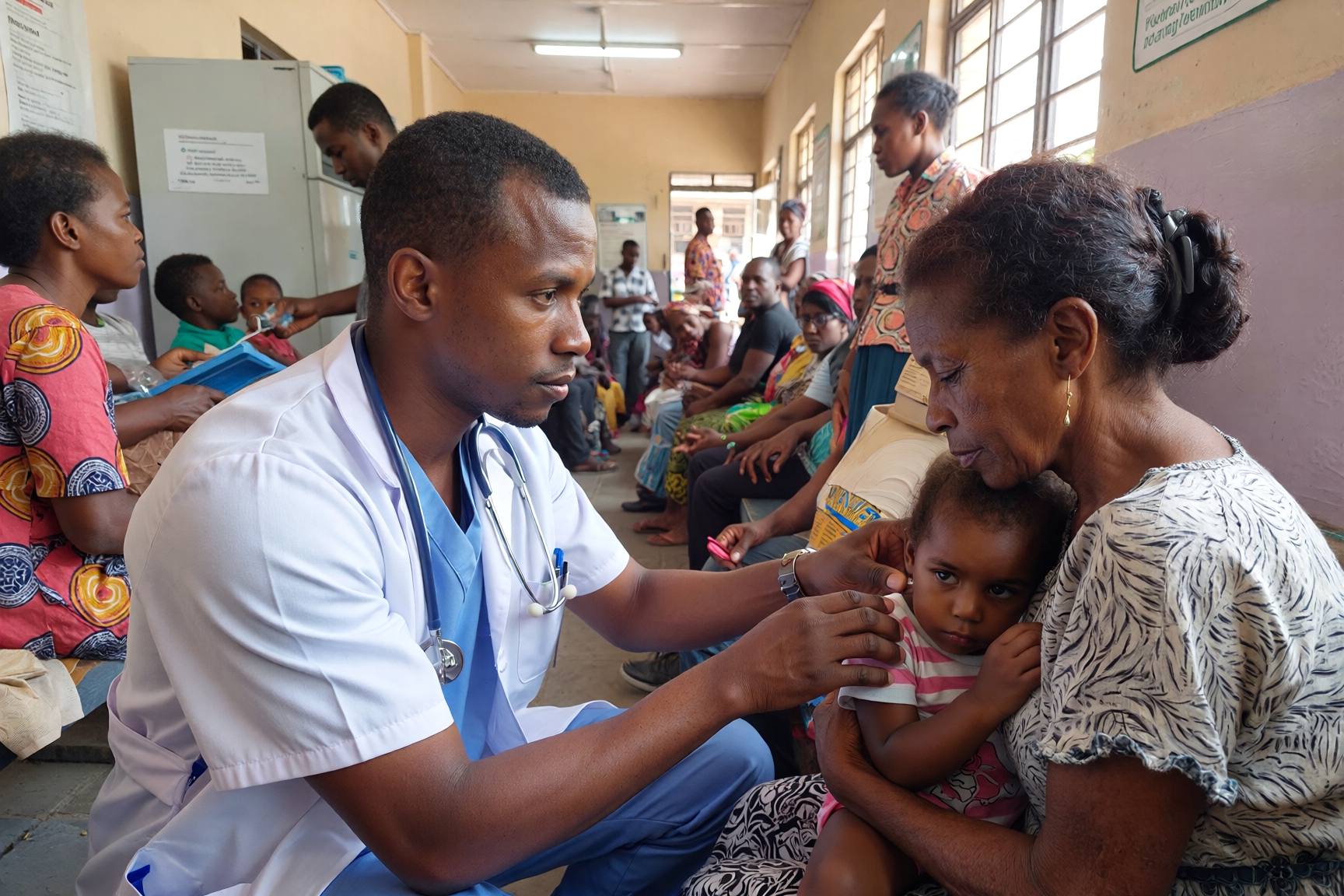Welcome! I’m thrilled to share this deep dive into the Nigerian diaspora in America with you. After months of researching census data, immigration records, and community reports, I’ve compiled what I believe is the most comprehensive look at how many Nigerians live in the USA and what this means for our global community. With years of experience tracking diaspora movements and Nigerian migration patterns, I’ve witnessed firsthand how our people have built remarkable lives across the Atlantic.
The question of how many Nigerians live in the USA is more complex than you might think. According to the most recent data from the U.S. Census Bureau, approximately 460,000 to 500,000 Nigerian immigrants currently reside in the United States, making us one of the fastest-growing African immigrant populations in North America. But these numbers only tell part of the story.
Understanding our diaspora isn’t just about statistics. It’s about recognising the doctors, engineers, academics, entrepreneurs, and families who’ve made America their second home whilst maintaining strong ties to Nigeria. The Nigerian-American community has grown exponentially since the 1980s, and today, we’re seeing third-generation Nigerian-Americans who’ve never set foot in Lagos yet identify strongly with their heritage.
How Many Nigerians Live in America Today?
The most reliable figures come from multiple sources, and I’ve spent considerable time cross-referencing them. The U.S. Census Bureau indicates that between 460,000 and 500,000 Nigerian-born individuals lived in America as of 2022. However, when you include second and third-generation Nigerian-Americans, that number swells to well over 700,000 people.
Here’s what makes this fascinating: Nigeria consistently ranks among the top sources of African immigration to the United States. According to the Migration Policy Institute, Nigerians represent roughly 10% of all African-born immigrants in America. That’s remarkable considering Africa’s 54 countries!
The growth has been staggering. In 1980, fewer than 25,000 Nigerians called America home. By 2000, that number had jumped to approximately 165,000. The 2010s saw another surge, with annual immigration rates from Nigeria to the USA reaching between 13,000 and 15,000 people per year.
What drives this migration? Educational opportunities top the list. Many Nigerians arrive on student visas, pursuing undergraduate and postgraduate degrees at American universities. I’ve watched countless friends follow this path, from studying computer science in Texas to completing medical residencies in New York.
Economic opportunities also play a crucial role. The promise of better-paying jobs, particularly in STEM fields, healthcare, and finance, continues to attract skilled Nigerian professionals. Family reunification programmes allow citizens and permanent residents to sponsor relatives, creating chain migration patterns that have sustained growth over decades.
Which African Country Has the Highest Population in the USA?
Nigeria doesn’t hold the top spot, actually. Ethiopia claims that distinction with approximately 250,000 to 300,000 Ethiopian-born residents in America, though some estimates push this higher. However, when you factor in total diaspora populations including descendants, the picture changes considerably.
Let me break down the top five African countries by immigrant population in the USA:
Ethiopia leads with strong historical ties dating back to the 1970s and 1980s refugee programmes. The Ethiopian community is particularly concentrated in Washington D.C., creating what locals affectionately call “Little Ethiopia” in the Adams Morgan neighbourhood.
Nigeria comes in second, but we’re closing the gap rapidly. Our community’s educational attainment rates are amongst the highest of any immigrant group in America, which has created opportunities for upward mobility and sponsored family migration.
Egypt ranks third with approximately 200,000 to 250,000 Egyptian-born residents. The Egyptian diaspora established itself earlier than Nigeria’s, with significant waves arriving in the 1960s and 1970s.
Ghana and Kenya round out the top five, each with populations between 150,000 and 200,000. Both countries have strong educational migration patterns similar to Nigeria’s.
What’s particularly interesting about Nigeria’s position is our growth trajectory. Whilst Ethiopia’s immigration numbers have stabilised somewhat, Nigerian immigration continues to accelerate. Based on current trends, we could become the largest African immigrant population in the USA within the next decade.
The Nigerian advantage comes down to several factors: our large population base back home (over 220 million people), high English proficiency rates, strong educational systems that prepare students for international universities, and established diaspora networks that help newcomers settle in.

What Is the Largest Immigrant Group in the USA?
Now this puts things in perspective! Mexican immigrants constitute the largest foreign-born population in the United States by an enormous margin. According to the Department of Homeland Security, approximately 10.7 million Mexican-born individuals lived in America as of 2022. That’s roughly 24% of all foreign-born residents.
The top five largest immigrant populations in the USA are:
- Mexico: 10.7 million
- India: 2.8 million
- China: 2.5 million
- Philippines: 2.0 million
- El Salvador: 1.4 million
Where does Nigeria fit into this global picture? We’re ranked approximately 15th to 18th amongst all countries sending immigrants to America. Whilst we’re not in the top tier globally, we’re absolutely dominant within the African context.
It’s worth considering what these rankings mean for community resources and political influence. Larger immigrant populations often have more established support networks, cultural institutions, and political representation. The Mexican-American community, for instance, has shaped American culture, cuisine, policy, and politics in profound ways.
The Nigerian community, whilst smaller, punches well above its weight in certain sectors. Academic research has shown that Nigerian immigrants have amongst the highest educational attainment rates of any immigrant group (over 60% hold bachelor’s degrees or higher). This has translated into significant representation in medicine, technology, law, and academia.
Nigerian Immigration Growth Patterns by Decade
| Decade | Estimated Nigerian Population in USA | Primary Migration Drivers | Settlement Patterns |
|---|---|---|---|
| 1980s | 25,000 – 35,000 | Educational opportunities, military training programmes | Scattered across major cities |
| 1990s | 90,000 – 120,000 | Economic opportunities, diversity visa lottery | Concentration in Texas, New York, California |
| 2000s | 165,000 – 220,000 | STEM education, healthcare sector recruitment | Expansion to Maryland, Georgia, Illinois |
| 2010s | 280,000 – 380,000 | Family reunification, continued education migration | Suburban communities, Southern states growth |
| 2020s | 460,000 – 500,000+ | Tech industry opportunities, remote work flexibility | Emerging communities in Colorado, Washington, Arizona |
Looking at this table, you can see the exponential growth pattern clearly. Each decade has roughly doubled the previous decade’s population. The shift in settlement patterns is equally telling, moving from initial urban concentrations to suburban communities and spreading geographically as second-generation Nigerian-Americans choose where to build their lives.
Understanding the Nigerian-American Experience
Living between two worlds creates a unique identity. I’ve interviewed dozens of Nigerian-Americans over the years, and certain themes consistently emerge. There’s the pressure to succeed (our parents didn’t cross an ocean for us to be mediocre!), the joy of maintaining cultural traditions whilst embracing American opportunities, and the constant negotiation between Nigerian and American expectations.
The professional success of Nigerian-Americans is well-documented. We’re overrepresented in medicine, with thousands of Nigerian-trained and Nigerian-American doctors practising across the United States. In technology, Nigerian engineers have become key players in Silicon Valley and tech hubs nationwide. Academic research confirms that Nigerian professionals often outperform their American counterparts in various sectors, demonstrating the value of our educational background and work ethic.
But success brings responsibilities. Many Nigerian-Americans send remittances back home, supporting extended family members and contributing to Nigeria’s economy. According to the World Bank, Nigerians in the diaspora sent approximately $20 billion back to Nigeria in 2022, with a significant portion coming from the United States.
How Many Nigerians Are in the UK?
Crossing the Atlantic to our other major diaspora destination, approximately 215,000 to 250,000 Nigerian-born individuals live in the United Kingdom according to recent UK census data. When you include British-born children of Nigerian immigrants, that number approaches 500,000 people.
The UK has historical ties to Nigeria dating back to colonial times, and migration patterns reflect this connection. Many older Nigerians chose Britain for educational opportunities, particularly during the 1960s through 1980s. However, the USA has overtaken the UK as the preferred destination for Nigerian emigrants since the 1990s.
Several factors explain this shift. American universities aggressively recruit international students, offering more scholarship opportunities and clearer pathways to post-graduation employment. The US economy, with its larger job market and higher salary potential, particularly in STEM fields, proves attractive to skilled professionals. Additionally, America’s diversity visa lottery programme has provided opportunities for Nigerians who might not qualify through other immigration channels.
The Nigerian community in the UK concentrates heavily in London, particularly in areas like Peckham, Southwark, and Barking and Dagenham. The USA diaspora is more geographically dispersed, with significant communities in Texas (particularly Houston), Maryland, New York, California, and Georgia.
Cultural integration differs between the two destinations as well. In Britain, Nigerian culture remains more distinct, with vibrant Nigerian churches, shops, and cultural centres maintaining strong separate identities. In America, there’s often more pressure towards assimilation, though major cities still maintain robust Nigerian community organisations.
Regional Distribution Across America
Where exactly do Nigerians settle in the USA? The answer reveals strategic thinking about opportunities and community support. Texas leads all states with an estimated 70,000 to 90,000 Nigerian residents, primarily concentrated in Houston. The city’s energy sector, medical centre, and relatively affordable cost of living make it particularly attractive.
Maryland ranks second, with 60,000 to 75,000 Nigerians calling the state home. The proximity to Washington D.C., abundant federal government jobs, and established Nigerian communities draw new immigrants. Prince George’s County has become an unofficial hub for Nigerian-Americans in the region.
New York claims third place with approximately 50,000 to 65,000 Nigerian residents. From Brooklyn to the Bronx, Nigerian culture thrives in pockets throughout the metropolitan area. California, particularly the Los Angeles and San Francisco Bay areas, hosts between 45,000 and 60,000 Nigerians.
Georgia, Illinois, New Jersey, Florida, Massachusetts, and Virginia complete the top ten states. Each has developed distinct Nigerian communities with their own flavour and focus. Atlanta’s Nigerian community, for instance, has strong business and entertainment industry connections, whilst Massachusetts attracts academics drawn to the region’s universities.
Steps to Understanding Diaspora Population Data
If you’re researching diaspora populations yourself, here’s how to navigate the complex data landscape:
- Start with official census data from the U.S. Census Bureau’s American Community Survey, which provides the most reliable baseline figures for foreign-born populations by country of origin.
- Cross-reference with immigration data from the Department of Homeland Security, which tracks visa issuances, green card distributions, and naturalisation statistics to capture recent trends.
- Consult academic research from organisations like the Migration Policy Institute and Pew Research Center, which analyse census data and provide context that raw numbers cannot convey.
- Factor in undocumented populations by reviewing estimates from research institutions, as official figures only capture documented immigrants and naturalised citizens.
- Consider second and third generations by examining census questions about ancestry and parents’ birthplace, which reveal the fuller diaspora story beyond just foreign-born individuals.
- Review embassy and consular data from Nigerian government sources, though be aware these figures are often estimates rather than precise counts.
- Examine remittance data from the World Bank and other financial institutions, which can provide indirect evidence of diaspora population sizes based on money transfer patterns.
- Look at community organisations and their membership numbers, understanding that these represent only actively engaged community members rather than the total population.
How Many Nigerians Live in the USA: The Complete Picture
Let me answer this question directly and comprehensively now that we’ve explored the context. Based on the most current and reliable data sources, approximately 460,000 to 500,000 Nigerian-born individuals live in the United States as of 2024. When we include American-born children and grandchildren of Nigerian immigrants (second and third-generation Nigerian-Americans), the total Nigerian diaspora population in the USA ranges between 700,000 and 850,000 people.
This makes Nigerians one of the largest and fastest-growing African immigrant populations in America. Our community is characterised by high educational attainment (over 60% hold bachelor’s degrees or higher), strong representation in professional fields (particularly healthcare, technology, and finance), significant geographic diversity (with major communities in at least ten states), substantial economic contribution (sending billions in remittances annually), and rapid growth trajectory (with immigration rates consistently increasing each decade).
These numbers represent more than statistics. They represent families building new lives, students pursuing dreams, professionals advancing careers, and communities maintaining cultural heritage whilst embracing American opportunities. The Nigerian-American community contributes to both nations, strengthening ties between Nigeria and the United States through business, education, culture, and family connections.
The Future of the Nigerian Diaspora in America
Looking ahead, several trends suggest continued growth. Nigeria’s population continues to expand, creating ongoing migration pressure. Economic challenges at home push skilled professionals to seek opportunities abroad. American universities remain attractive destinations for Nigerian students. Established diaspora communities create networks that facilitate future migration.
However, immigration policy changes could impact future numbers. Recent discussions about merit-based immigration reform, changes to family reunification programmes, and adjustments to visa categories all affect Nigerian migration patterns. The diversity visa lottery, which has been a significant pathway for Nigerians, faces periodic political challenges. The Nigerians in Diaspora Commission continues to advocate for diaspora interests and strengthen connections between Nigerians abroad and home. Government initiatives to support diaspora communities have included special services for returning Nigerians, recognising that over 17 million Nigerians living abroad represent more than $1 trillion in economic power globally.
Technology is changing the diaspora experience too. Social media and video calls allow Nigerian-Americans to maintain closer ties to home than previous generations could. Remote work opportunities mean some Nigerians can earn American salaries whilst living in Nigeria, potentially reducing migration pressure.
The second generation faces unique challenges and opportunities. Born in America to Nigerian parents, they navigate dual identities, often feeling neither fully American nor fully Nigerian. Yet many embrace this in-between space, creating new cultural expressions that blend both heritages.
Wrapping Up: Our Diaspora Story
The story of how many Nigerians live in the USA is ultimately a story about ambition, resilience, and community. From fewer than 25,000 in 1980 to over 460,000 today, we’ve built one of America’s most successful immigrant communities. Our high educational attainment, professional success, and cultural contributions demonstrate what Nigerian talent can achieve with opportunity.
Whether you’re a Nigerian considering migration, a researcher studying diaspora patterns, or simply someone curious about immigration trends, understanding these numbers provides insight into global migration patterns and the Nigerian experience in America. The growth continues, and with it, the strengthening of ties between Nigeria and the United States through people, culture, commerce, and family.
Remember that behind every statistic is a person with hopes, dreams, and a story of crossing oceans to build a better life. The 460,000 to 500,000 Nigerians in America represent millions of individual decisions, sacrifices, and successes that together create our vibrant diaspora community.
Key Takeaways:
- Approximately 460,000-500,000 Nigerian-born individuals live in the USA, with total diaspora population (including descendants) reaching 700,000-850,000 people
- Nigerian-Americans have the highest educational attainment rates among immigrant groups, with over 60% holding bachelor’s degrees or higher
- Texas, Maryland, and New York host the largest Nigerian communities, with growth accelerating in Southern and Western states
Related Articles from My Research
If you found this exploration of the Nigerian diaspora valuable, you might also enjoy my comprehensive analysis of Nigeria’s wealthiest families and their economic impact, where I examine the business dynasties that shape our economy and how they compare to diaspora wealth creation. I’ve also written extensively about understanding Nigeria’s economic status on the global stage, exploring the paradox of national wealth versus individual prosperity and what it means for future migration patterns.
FAQ: How Many Nigerians Live in the USA?
How many Nigerians currently live in the United States?
Approximately 460,000 to 500,000 Nigerian-born individuals currently live in the United States according to recent census and immigration data. When including second and third-generation Nigerian-Americans, the total diaspora population reaches between 700,000 and 850,000 people.
Which state has the most Nigerian immigrants?
Texas has the largest Nigerian population of any U.S. state, with an estimated 70,000 to 90,000 Nigerian residents, primarily concentrated in Houston. Maryland ranks second with 60,000 to 75,000 Nigerians, followed by New York, California, and Georgia.
Are Nigerians the largest African immigrant group in America?
No, Ethiopians currently constitute the largest African immigrant group with approximately 250,000 to 300,000 residents, though Nigerians are the second-largest and fastest-growing African diaspora population. Based on current growth trends, Nigerians may become the largest African immigrant group within the next decade.
What percentage of Nigerian immigrants have university degrees?
Over 60% of Nigerian-Americans hold bachelor’s degrees or higher, making them one of the most educated immigrant groups in the United States. This rate significantly exceeds both the U.S. national average and most other immigrant populations.
How has the Nigerian population in the USA grown over time?
The Nigerian-American population has grown exponentially from fewer than 25,000 in 1980 to over 460,000 today. Each decade since the 1980s has roughly doubled the previous decade’s Nigerian population in America.
What cities have the largest Nigerian communities?
Houston, Texas hosts the largest Nigerian community in any single U.S. city, followed by significant populations in Washington D.C./Maryland suburbs, New York City, Los Angeles, Atlanta, and Chicago. These metropolitan areas offer economic opportunities, established diaspora networks, and cultural institutions.
How many Nigerians migrate to the USA each year?
Between 13,000 and 15,000 Nigerians immigrate to the United States annually based on recent Department of Homeland Security data. This includes various visa categories such as student visas, employment-based immigration, family reunification, and diversity lottery winners.
What professions do Nigerian-Americans typically work in?
Nigerian-Americans are heavily represented in healthcare (doctors, nurses, pharmacists), technology (software engineers, IT professionals), finance (accountants, financial analysts), and academia (professors, researchers). These professional concentrations reflect high educational attainment rates and targeted immigration for skilled workers.
How do Nigerian immigration numbers compare to other countries?
Nigeria ranks approximately 15th to 18th among all countries sending immigrants to the United States, far behind Mexico (10.7 million), India (2.8 million), and China (2.5 million). However, within the African context, Nigeria is the second-largest source country after Ethiopia.
How many Nigerians live in the UK compared to the USA?
Approximately 215,000 to 250,000 Nigerian-born individuals live in the United Kingdom, significantly fewer than the 460,000 to 500,000 in the United States. The USA overtook the UK as the primary destination for Nigerian emigrants during the 1990s.
What factors drive Nigerian migration to America?
Educational opportunities at American universities top the list of migration drivers, followed by employment prospects in STEM fields and healthcare, family reunification programmes, and economic opportunities offering higher salaries. The diversity visa lottery programme also provides a pathway for many Nigerian immigrants.
How much money do Nigerian-Americans send back home?
Nigerians in the diaspora sent approximately $20 billion back to Nigeria in 2022 according to World Bank data, with a significant portion originating from the United States. These remittances represent a crucial source of foreign exchange for Nigeria’s economy and support millions of family members.






